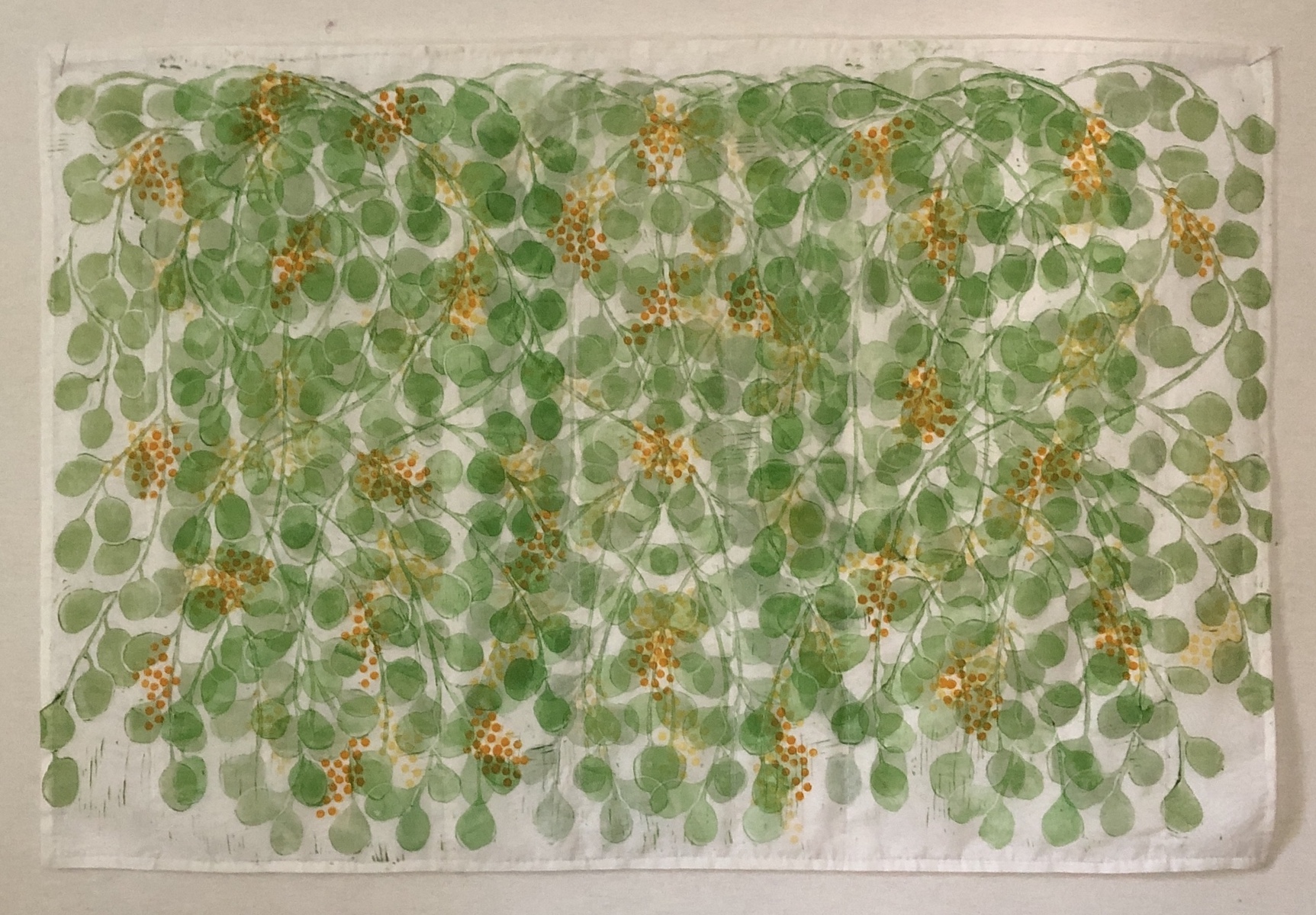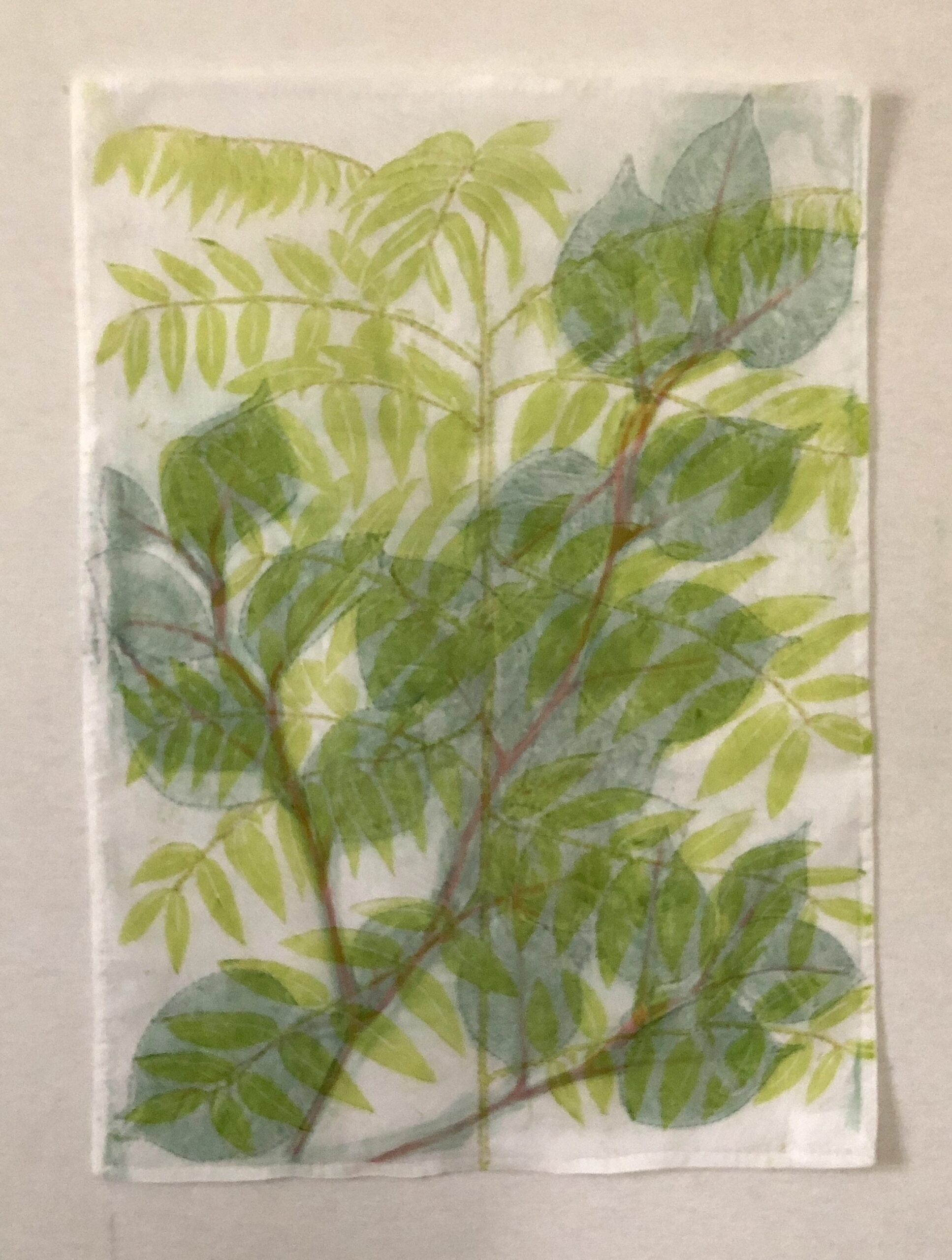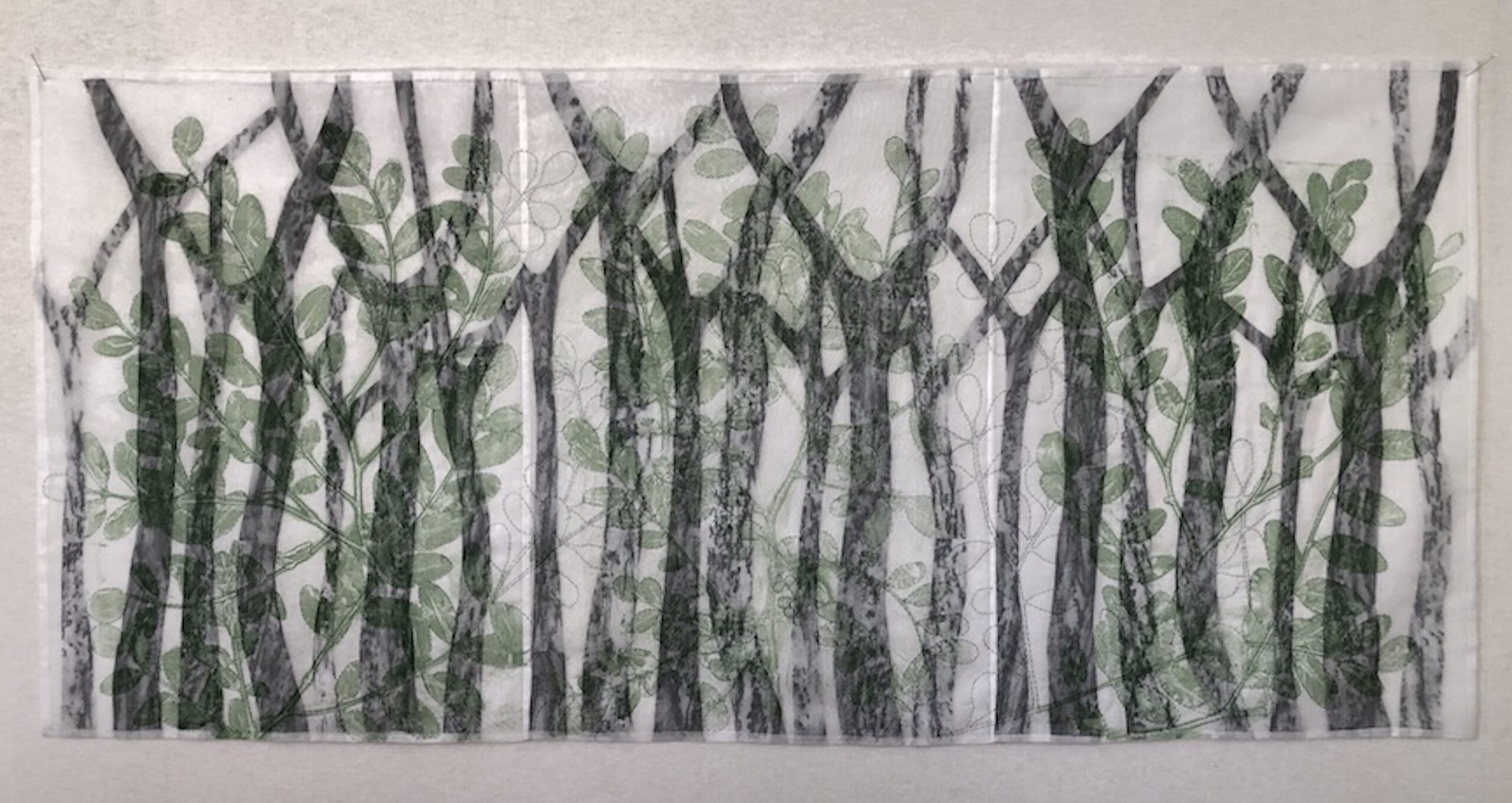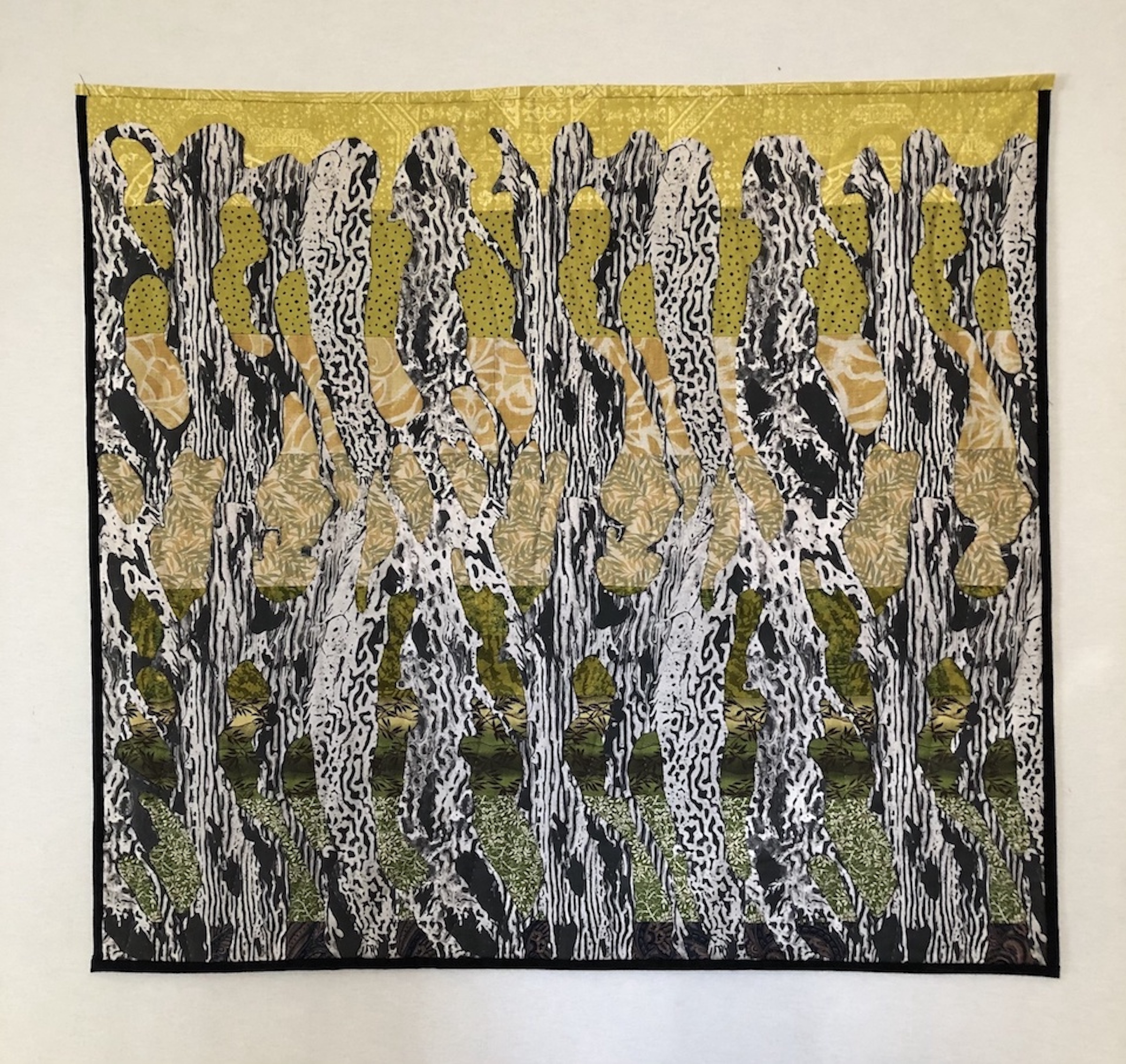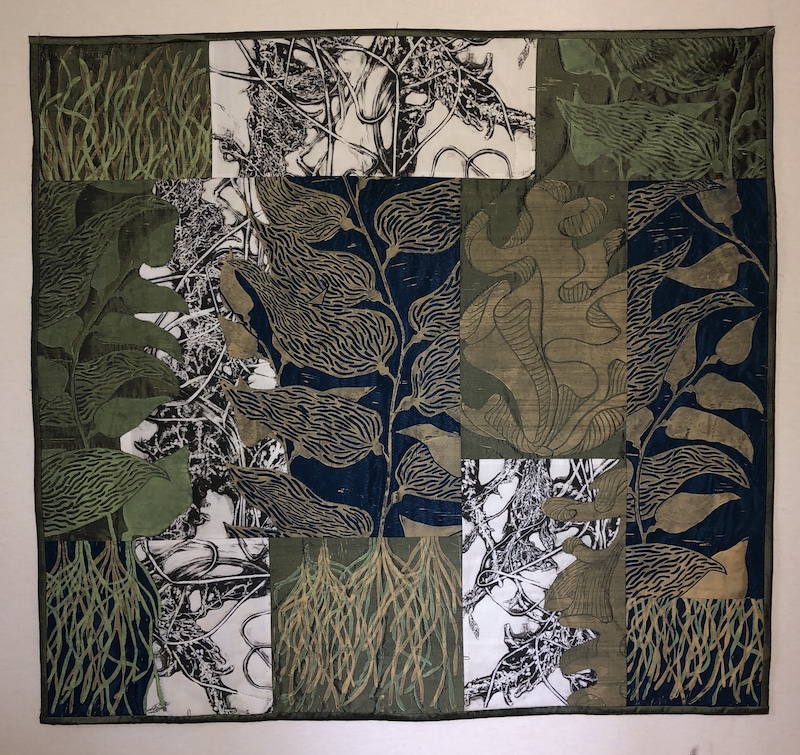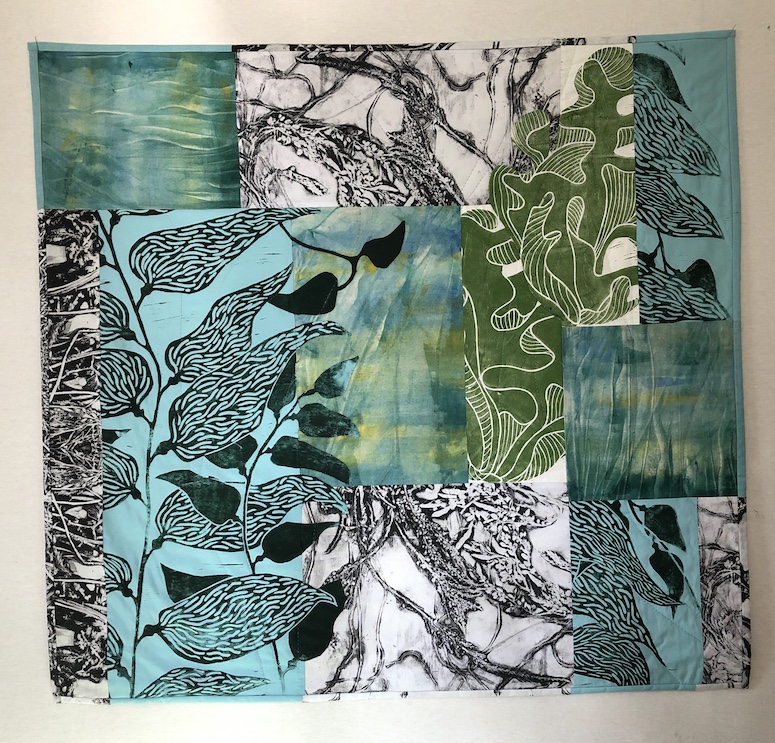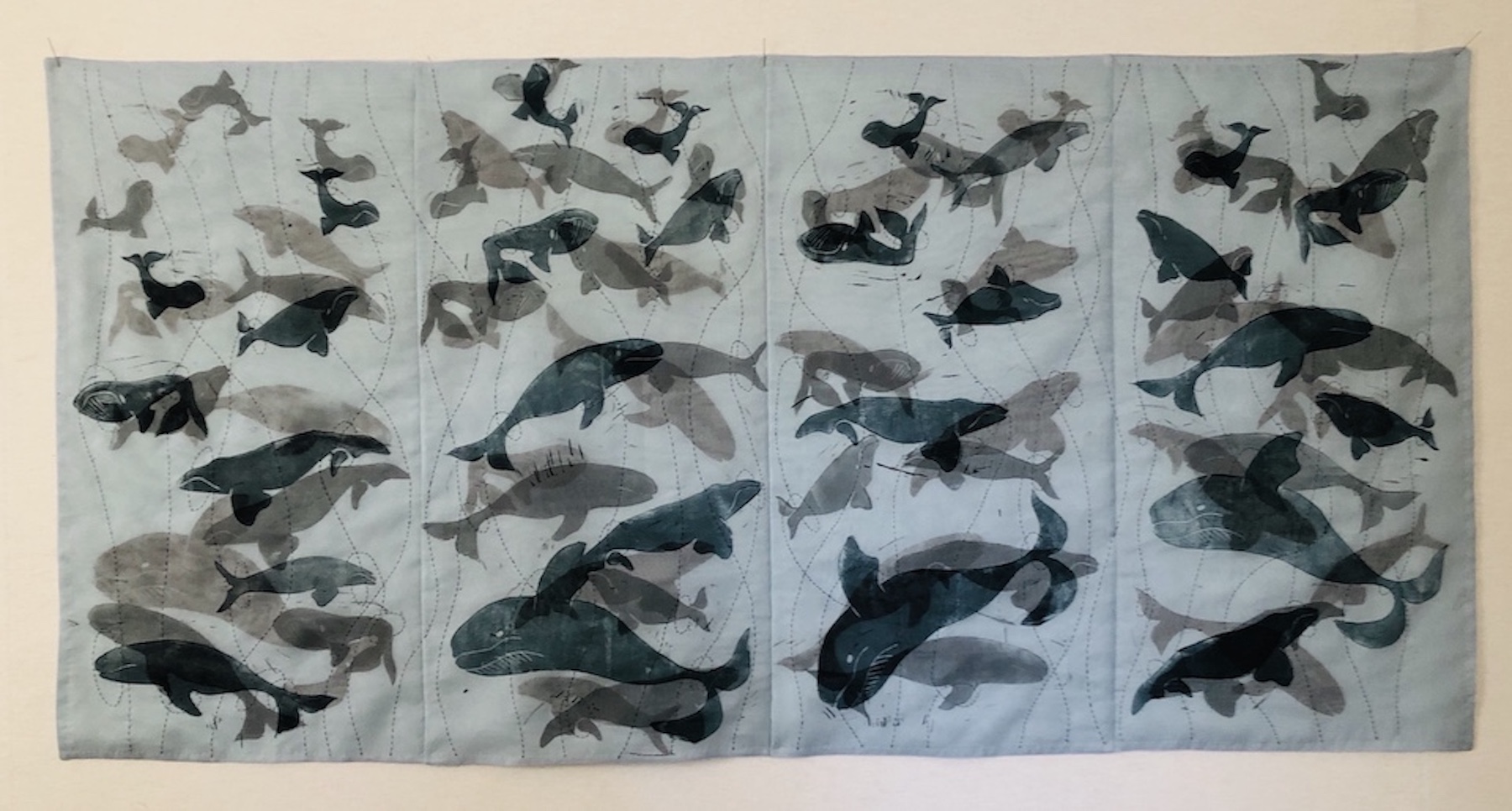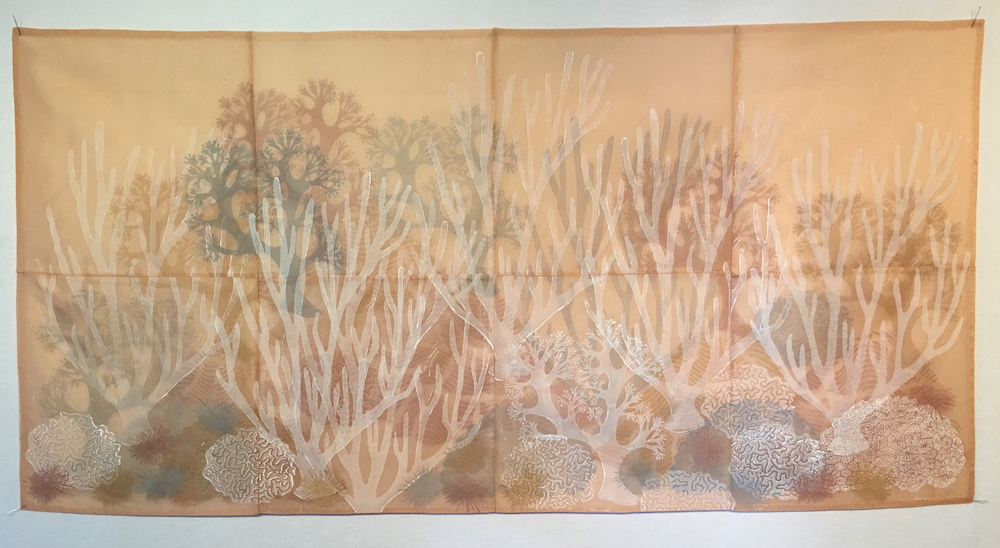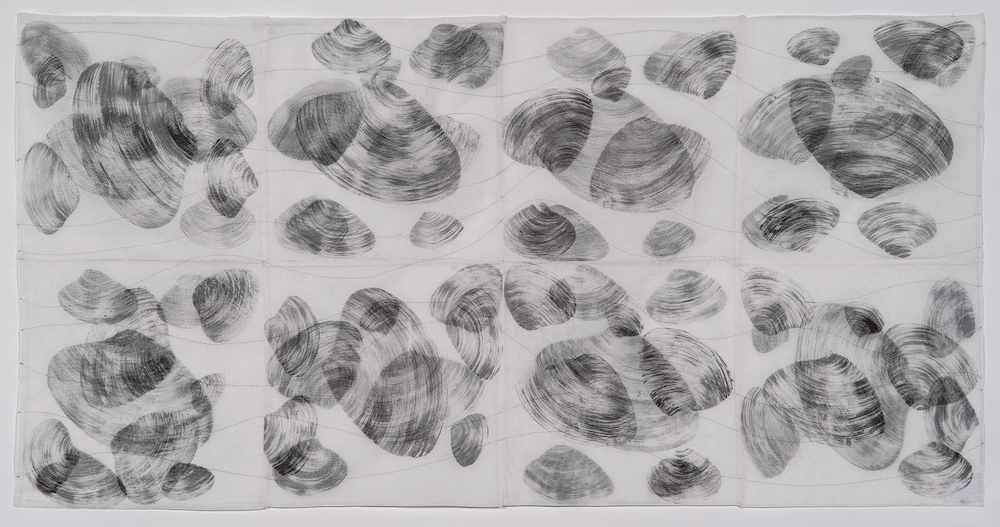Nancy Crasco
Invasive: Bittersweet, 2023
Linoleum Prints on cotton organdy and silk organza 24" x 36"
In autumn the attractive berries of Oriental bittersweet appear and are used in flower arrangements and wreaths. This woody vine was introduced into the US in the mid-nineteenth century from Asia, and has proliferated along roadsides, and in forests. Its rapid growth girdles and strangles adjacent vegetation, including trees.
Nancy Crasco
The Invaders, 2022
Gelatin print on cotton organdy, Linoleum print on silk organza 24" x 17"
Japanese knotweed and ailanthus altissimus are rampant invasive plants in the Boston area.
Nancy Crasco
Robinia pseudoacacia, 2023
Linoleum Prints on cotton organdy and silk organza 24" x 52"
Commonly known as black locust, and originally native to the Allegheny Mountains, this species has escaped gardens and naturalized over time to invade areas throughout much of the United States and southern Canada plus parts of Europe, Asia and South America. An easy-to-grow tree that thrives in many difficult growing conditions, It spreads rapidly via underground suckers to form large stands. It is designated as a noxious weed or invasive species in many US states and is highly susceptible to insect pests and plant diseases.
Nancy Crasco
Dance of the Bull Kelp, 2020
Cottons 34" x 38"
The black and white fabric used in this quilt was created from a gelatin print of kelp leaves gathered on the beach. Giant kelp is one of California’s valuable living marine resources. It is harvested from Imperial Beach in San Diego County, near the U.S.-Mexico border, and extends north to Santa Cruz.
Nancy Crasco
Sea Tangle, 2019
Linoleum prints on silk and Spoonflower printed cotton from original gelatin prints 41"x 46"
Nancy Crasco
Ocean Gardens, 2019
Linoleum prints on cotton and Spoonflower printed cotton from original gelatin prints, painted canvas 38' x 41"
Nancy Crasco
The Right Whale, 2020
Linolem prints on silk organza 24" x 48"
The North Atlantic Right Whale is one of the most endangered marine species, with 340 remaining of which only 70 are breeding females. Three factors contribute to the decline: climate change, vessel strikes and entanglements in fishing gear. Climate change drives the decline because the whales have followed their food source into areas which are frequented by commercial vessels. Wildlife organizations are working with fishermen to develop fishing gear to reduce the chances of a whale becoming entangled; petitioning the US government to increase protections from vessel strikes; and ensuring that offshore energy proposals do not impact this endangered species.
Nancy Crasco
Climate Change Indicator: Coral, 2018
Gelatin and linoleum prints on silk organza 24" x 48"
Nancy Crasco
Climate Change Indicator: Quahogs, 2017
Gelatin prints on silk organza 24" x 48"
